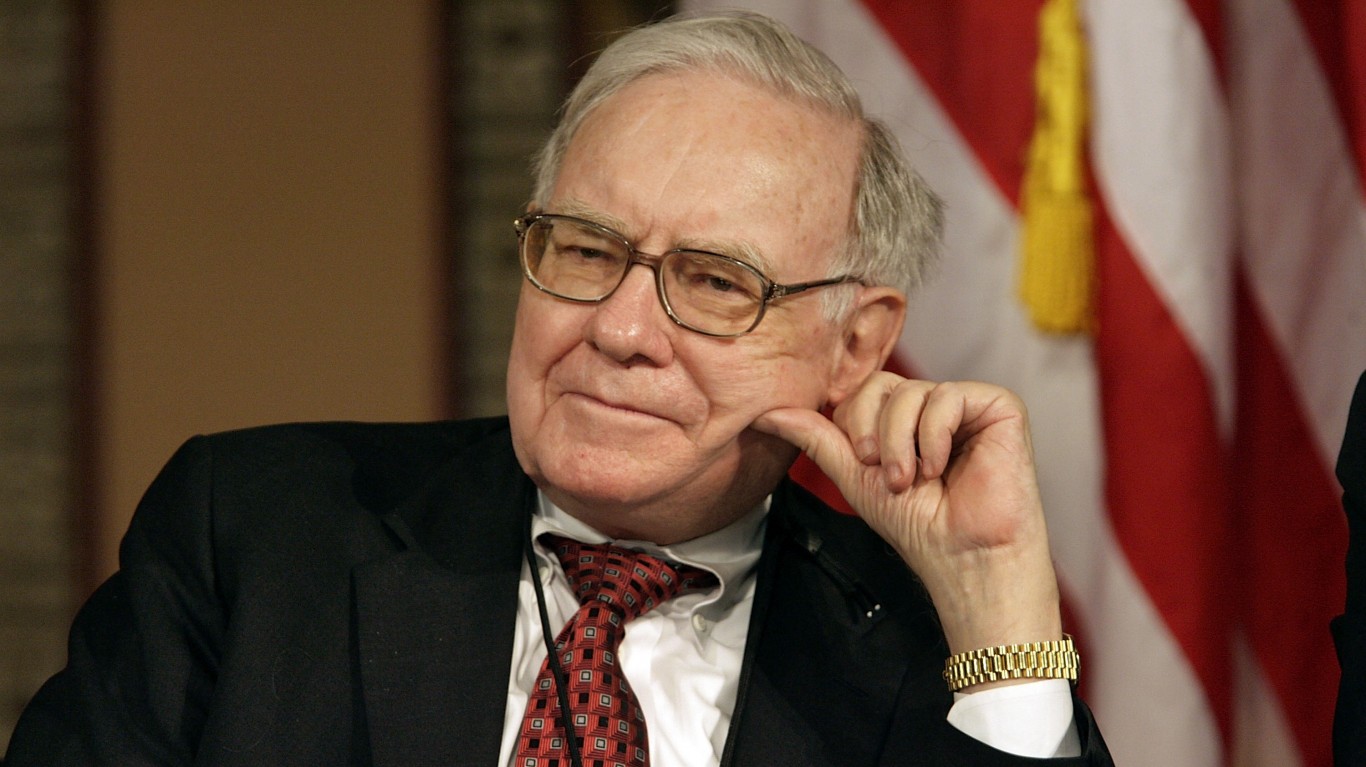Key Points
-
ULTY’s precipitous NAV drop has disheartened a number of investors who bought it last year, despite the high dividend distribution yield.
-
As ULTY’s stock price has traded sideways since the April market drop in response to the reciprocal tariff policy, some of the diehard investors are dollar cost averaging and joining new investors who have learned about ULTY only recently.
-
The bulls and bears each have valid points to their arguments, but will likely not win over any converts in either direction.
-
Are you ahead or behind on retirement? SmartAsset’s free tool can match you with a financial advisor in minutes to help you answer that today. Each advisor has been carefully vetted and must act in your best interests to protect your portfolio. Don’t waste another minute – learn more here.(Sponsor)
The YieldMax Ultra Option Income Strategy ETF (NYSEARCA: ULTY) has polarized many DIY investors who have bought it for dividend income since its launch in February, 2024 at $20.00. The YieldMax success formula with its Nvidia and MicroStrategy covered call ETFs (NVDY and MSTY), by adding a hefty monthly dividend component to an ETF that tracked and shared a portion of the referenced stock’s market upside, already had attracted billions of investment dollars. ULTY was designed to replicate the formula on steroids: as many as 30 or so different volatile stocks all in the same portfolio, ultimately generating weekly dividends.
ULTY’s Tumultuous 18 Month History
Unfortunately, ULTY experienced growing pains. The capital appreciation side has never truly kicked in, and shareholders have yet to recoup their investments through dividends since ULTY’s inception in February, 2024. In its first 12 months, ULTY lost a net -2.25% when factoring in the large dividends, otherwise the drop was substantially steeper (60%) when judging solely by market price. The monthly option premiums and additional investment inflows proved insufficient to offset NAV erosion.
ULTY shifted to an options collar strategy in November 2024, adding put options for risk mitigation to its call writing platform. Additionally, ULTY reduced its synthetic options exposure and acquired holdings in the actual underlying stocks for its portfolio.
In March 2025, ULTY shifted to a weekly dividend-payment schedule intended to reduce NAV declines related to distributions. The weekly distribution schedule reduced the lag time between when it collected income and when it paid it out to shareholders. The weekly dividends sparked renewed interest and the word of mouth spread on Reddit and other DIY investor forums.
From March 10 through Aug. 13, 2025, ULTY distributed substantial dividends during this period, but its total return lagged the Nasdaq 100 index due to ongoing NAV declines. During this time, the fund’s NAV has ranged between $6.31 per share and $6.08 per share. Except for a sharp fall in early April as a result of market response to President Trump’s tariff announcements, ULTY gradually climbed back up to its present level shortly thereafter. The gains coincided with a surge of inflows, increasing by 33.7% with an additional 118.5 million units as of August. The NAV has slipped to a recent trading range of $5.56 -$5.85, but many investors are hopeful that it will potentially climb back to as high as $7.00 in the near term instead of falling below $5.00.
The Great Divide

Understandably, the drop in NAV from $20.00 to $6.00 has left a sizable portion of remaining early ULTY shareholders disgruntled, as a good chunk of them have already sold to cut their losses. Pessimism about the prospects for ULTY has caused them to take to social media to complain or to warn others away from it, citing numerous reasons.
However, there is also a large constituency of investors who share the upside optimism and see the present low range as a bottom fishing, dollar cost averaging opportunity. They are unperturbed by the NAV drop and are largely responsible for the inflow surge.
Buyer’s Remorse and Negative Analogies

Many of the ULTY bears are still regretfully retaining ULTY or have already sold much, if not all of their holdings. They cite the following reasons:
- Feelings of being ripped off: “I’d rather buy 100 SPY shares and trim a couple as they appreciate whenever I actually “need” money instead of handing other people my money and letting them keep a full percentage point as they slowly milk it to zero.”
- Comparisons to other growth ETFs: Aside from ULTY buyers who bought at the last bottom in April, no other shareholders are remotely close to breaking even, whereas if they had bought VOO or SPY, they would already be well returned to profit.
- Reverse-Split Fears: If ULTY manages to drop to $5 and dips under, there are concerns that it might prompt YieldMax to declare a reverse-split, which would wipe out much of the compounding gains set in motion by investors who have been reinvesting dividends into additional shares.
- Portfolio Stock Weakness: As some have noted, many of the high volatility underlying stocks in the ULTY portfolio are also experiencing downturns – hence NAV will inevitably drop, despite the dividends.
- Potential Dividend Faltering: One of the primary vulnerabilities of the YieldMax covered call ETF model is that a bear or flat market dries up demand for call options, which are the source of the dividends. If call premiums shrink, then high dividends can only be sustained by dipping into internal funds, thus eroding NAV further.
“Be fearful when others are greedy and greedy when others are fearful,”– W. Buffett

The diehard ULTY bulls are not only enthusiastic about ULTY’s prospects, but a large number of them are doubling down. They are buoyed by a different perspective on market events than the naysayers, taking the contrarian advice of market gurus like Warren Buffett to heart, calculating break-even metrics scenarios, and the consensus view of analysts. Their rationales include:
- Diversification works: Unlike the majority of other YieldMax ETFs which are predicated on single stock tracking, such as its NVDY Nvidia ETF, ULTY carries a portfolio of 30 different stocks on average that are actively undergoing the option strategy process. For the past week, ULTY traded down -2.75%, whereas a number of the underlying stocks ranged from Credo Technology being down -11.17% to Palo Alto Networks trading up +3.48 for an overall average of -10%. As such, diversification as risk mitigation appeared to be working to protect the downside drops, with the upside likely to return.
- Apples and Oranges: Analogies trying to compare S&P 500 index ETFs with risky, volatile tech stocks in a bundled portfolio is a poor comparison in the eyes of ULTY bulls. A more appropriate comparison would be QQQ (Nasdaq 100). Since the “Liberation Day” tariff post-announcement drop and bounceback in the market, QQQ and ULTY are back up roughly the same if comparing percentage of market gain for QQQ and ULTY dividend distribution equivalent.
- Summer Doldrums: August and early September has historically been the slowest period of the year for the stock market, since many traders and investors take vacations during that month. A less active market is anathema to the YieldMax ETF model as mentioned earlier. Things are expected to pick up in mid-September, so ULTY bulls see the present level as a window for a buying opportunity
- Risk/Reward Ratio: With ULTY’s current low price and the assumption that bullish volatility will resume in the market in the next few weeks, the dividend rate, if reinvested in a DRIP program, could conceivably generate enough distributions to recoup the investment in 30 months or so,, thus rendering all subsequent dividends as a “free ride” profit to be taxed as capital gains, rather than as income. Some investors are comfortable with that risk/reward ratio, as opposed to a QQQ or SPY ETF, which would have more point-for-point matching but lack the high income component of ULTY.
One ULTY bull who loves the strategic premise suggested some tweaks to the current model that he believed would stabilize the ETF and generate even further inflows. Therefore, announcements of any of these steps may be worth watching, if enacted:
- Reduce dividend to a more sustainable level, rather than maxing out yield for marketing purposes.
- Paying a consistent dividend distribution (perhaps 5 cents vs, 10 cents per week) to halt the NAV erosion will help to stabilize the market price and restore confidence and positive perception among investors.
- Include volatile stocks with more upside potential for the overall portfolio so investors could see capital appreciation aspect: why is MicroStrategy in the ULTY portfolio, but not Nvidia?
He stated that if these steps were in effect, he would easily invest another $100,000 into ULTY.
The Camps Are Polarized And Are Unlikely To Agree

Investors that feel that they were burned by ULTY have such vitriol towards it that they continue to deride it on Reddit and other social media when they read any posts that express a positive sentiment. The only thing that will likely quiet their complaints would be for ULTY to do a turnaround and climb back to double digits in its NAV price. In the meantime, fans of ULTY will continue to ride it up and down, as long as the dividends continue to pay out each week.
Where will ULTY go from here? Many think a climb back to $7.00 is very plausible, although other circumstances yet to become manifest will be required to get back to over $10.00.
The post My ULTY Strategy Is Working, Time to Buy More Despite Market Drops appeared first on 24/7 Wall St..
Click this link for the original source of this article.
Author: John Seetoo
This content is courtesy of, and owned and copyrighted by, https://247wallst.com and its author. This content is made available by use of the public RSS feed offered by the host site and is used for educational purposes only. If you are the author or represent the host site and would like this content removed now and in the future, please contact USSANews.com using the email address in the Contact page found in the website menu.





